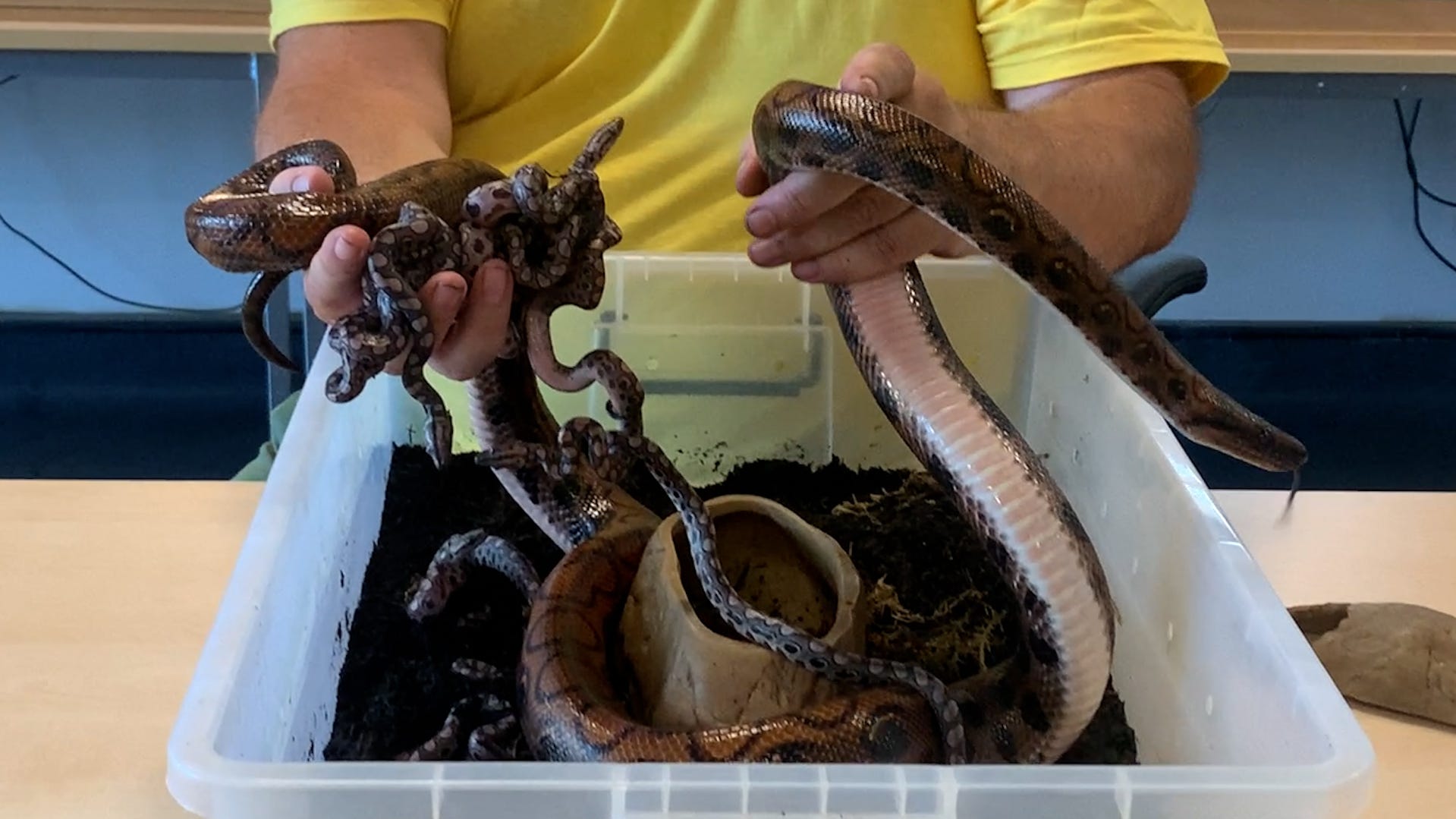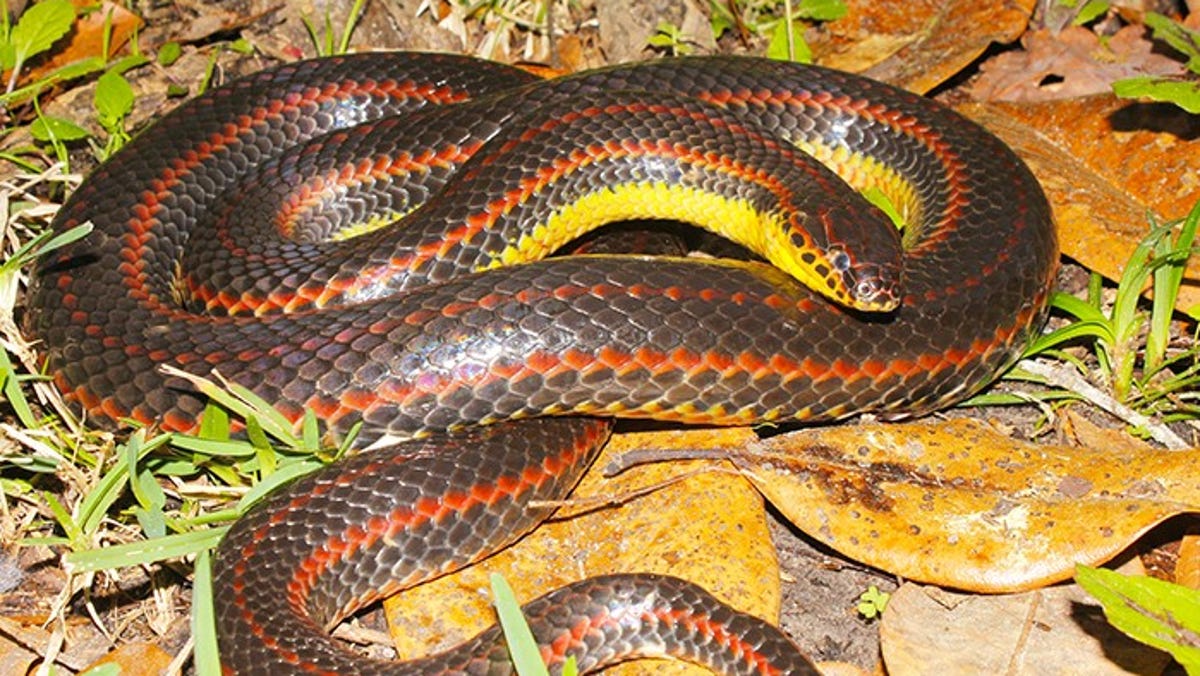
Incredibly rare snake birth produces 14 baby boas
A Brazilian rainbow boa, believed to be a male, gave birth to 14 snakes despite being isolated from other snakes for nine years.
- Florida officials are concerned about the invasive Burmese python, which is harming the Everglades ecosystem.
- Conversely, the Florida Fish and Wildlife Commission is asking for public help in locating the declining, nonvenomous rainbow snake.
- Rainbow snake populations have decreased due to habitat loss and a decline in their primary food source, the American eel.
For several years now, Burmese pythons have been a priority for the Florida Fish and Wildlife Commission (FWC).
Pythons are invasive. Decades after the snake was first identified in Florida, introduced through the exotic pet trade, efforts to eliminate pythons have included the annual Python Challenge, hosted every summer by the FWC and South Florida Water Management District. Cash prizes are awarded for the elimination of the most pythons during a 10-day hunt.
Pythons are ravaging the Everglades ecosystem, preying on the native wildlife. There are concerns the snake could migrate north into more populated area as the food supply dwindles.
But there are snakes the FWC doesn’t want to see go away. This summer the FWC put word out that it is seeking the public’s help with reporting sightings of the elusive rainbow snake (Farancia erytrogramma), a nonvenomous species whose population has declined in recent decades.
According to the FWC website, rainbow snakes are semi-aquatic reptiles that primarily feed on American eels, a prey species that has also declined in Florida waters. This dependency, along with habitat loss, has contributed to population reductions. Snake fungal disease is impacting rainbow snake populations in other states, raising concerns about the species’ long-term survival.
“We need help from Floridians and visitors to better understand where rainbow snakes still occur in the state,” said Kevin Enge, Research Scientist with FWC’s Fish and Wildlife Research Institute. “Every sighting report gives us valuable data about their current distribution and helps us assess the health of the species in Florida.”
What do rainbow snakes look like?
Rainbow snakes are:
- Visually striking and difficult to mistake for other species.
- They are iridescent black or violet-blue with three red stripes along their back.
- Their lip and chin scales are yellow, marked with violet spots, and adults typically reach 3 to 4 feet in length.
Where can you find rainbow snakes in Florida?
These snakes are usually found in or near water, including rivers, springs and brackish marshes. One south Florida subspecies was historically found in Fisheating Creek in Glades County, about 45 miles east of Fort Myers. That location is more than 150 miles south of the nearest known population in Lake County, but hasn’t been documented since 1952.
How to report a rainbow snake sighting to the FWC
If you spot a rainbow snake in Florida, please report your sighting to the FWC. Photographs are especially helpful in confirming sightings and can be included when you submit your sighting online.
